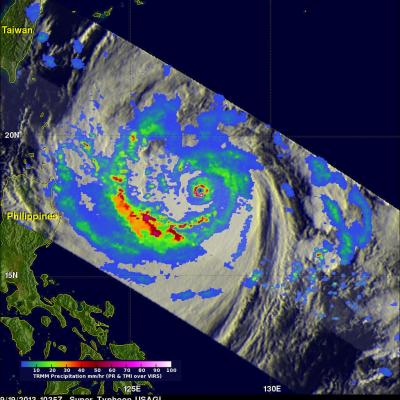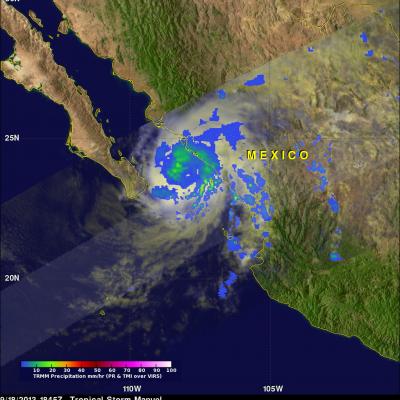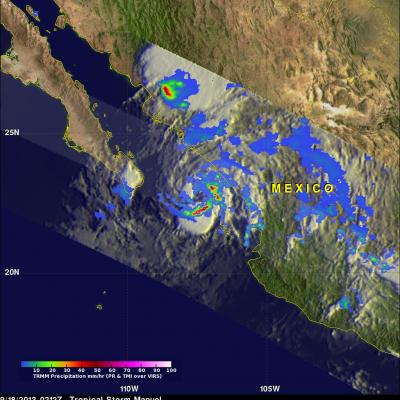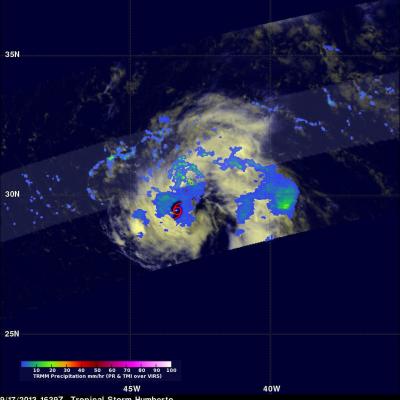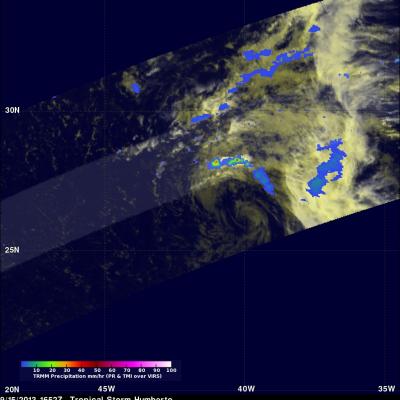Super Typhoon Usagi Threatens The Philippines and Taiwan
The most powerful typhoon of 2013 may affect the northern Philippines and southern Taiwan. What is now super typhoon USAGI formed in the open waters of the Philippine Sea about 1,000 km (~620 miles) east of the Philippines on September 16, 2013. USAGI rapidly intensified and became a typhoon yesterday. Super Typhoon USAGI had estimated maximum winds of close to 140kts (~161 mph) when the TRMM satellite had an excellent view on September 19, 2013 at 1035 UTC. A precipitation analysis from TRMM's Microwave Imager (TMI) and Precipitation Radar (PR) instruments is shown on the left overlaid on an


